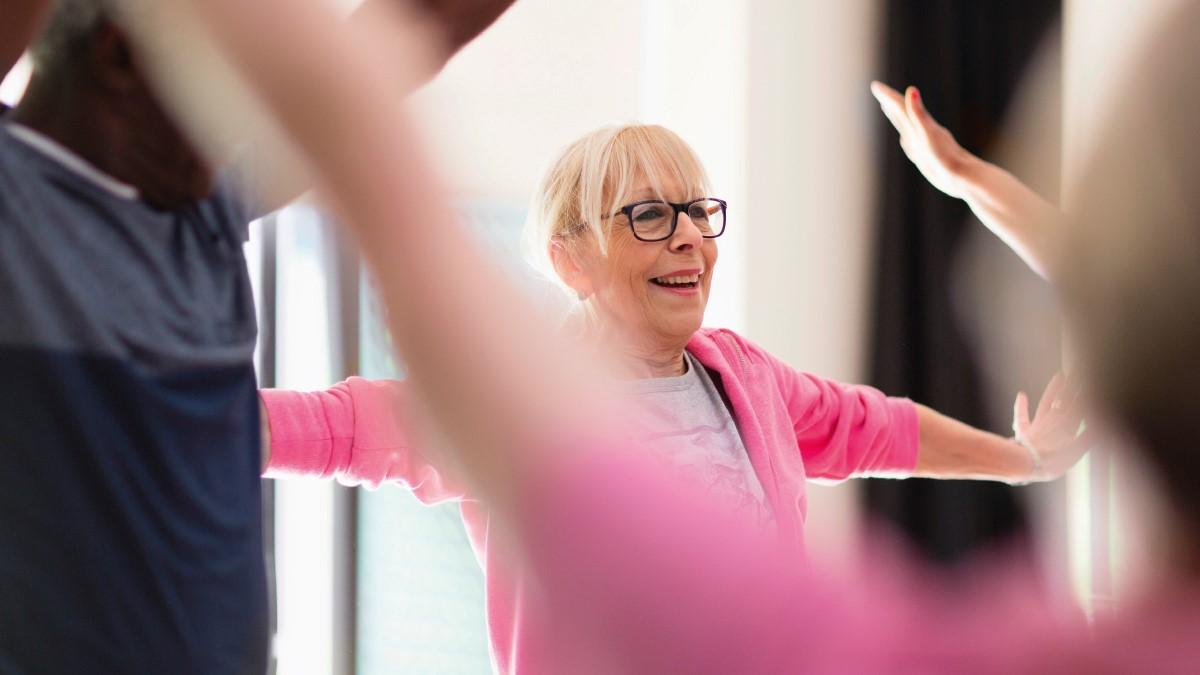As cancer treatments improve, more people are surviving cancer.

Why was this study needed?
As cancer treatments improve, more people are surviving cancer. Recent projections indicate that by 2040, nearly three out of four cancer survivors will be 65 years and older. However, cancer and its treatments affect the body and can impact on people’s ability to carry out everyday activities.
Cancer survivors need support to help them to restore and/or adapt to their new level of physical function, with about 30 per cent of people reporting unmet needs after treatment. Physical rehabilitation to help cancer survivors to increase and improve their physical activity might help in coping with the physical consequences of cancer.
This systematic review focused on physical activity programmes offered to people within their home or community, rather than in a hospital
or outpatient centre.
What did this study do?
This systematic review included 14 randomised controlled trials (with 1,768 participants) comparing community-based physical rehabilitation with a control. One study was from the UK, most were from the US.
The interventions were varied, but most included group sessions, workbooks and telephone support. There was a wide variation in the number of sessions (three to 104 sessions) and time frame (12 to 52 weeks). The controls received standard care, a low-impact intervention or remained on a waiting-list to receive the intervention.
The trials were generally assessed as high quality. However, many relied on participants’ recall and self-reporting of exercise, which might have introduced inaccuracy.
The trials mainly included women with breast cancer. The intervention occurred either during or after treatment, so we cannot be sure if the timing of the start of rehabilitation is important.
What did it find?
- People who had received a community-based physical activity intervention could walk faster, on average 28 metres further in six minutes, than people in the control groups (95 per cent confidence interval 15.14 metres to 39.86 metres).
- Community-based physical rehabilitation produced a small, but statistically significant, improvement in physical functioning in four out of the five measures used across the studies. These measurements included how far people could walk in six minutes, self-reported everyday functioning such as climbing stairs, pain and whether physical problems had disrupted everyday social and work activities.
- There was a 2.1 point increase in scores on the 100-point physical functioning aspect of the SF-36 quality of life scale, among people receiving community-based physical activity interventions compared to controls.
By 2040 75% of cancer survivors will be 65 years and older
What does current guidance say on this issue?
National Institute for Health and Care Excellence (NICE) guidelines are not consistent in recommending physical rehabilitation for people receiving treatment for cancer. For example, NICE makes no physical rehabilitation-related recommendations for colorectal, prostate or advanced breast cancer. Whereas its 2017 early-stage breast cancer guidelines recommend postoperative arm physiotherapy to ensure future mobility.
In its 2015 to 2020 cancer strategy for England, the Independent Cancer Taskforce recommended that NHS England and Health Education England review the cancer rehabilitation workforce. It advised promoting the role of allied health professionals, who work in cancer rehabilitation, as part of multi-disciplinary cancer teams, not just in palliative care. NHS England’s 2016 commissioning guidance recommends rehabilitation for a number of conditions, including cancer.
What are the implications?
Older cancer survivors can find their physical functioning reduced after cancer and treatment, adding to any physical issues they may already have associated with ageing. Home and community-based physical rehabilitation appears to help to improve these cancer survivors’ physical functioning.
The participants were on average aged 44 to 73 years. So improving physical functioning could help to support older cancer survivors to continue to live independent and active lives as they age.
Home and community-based programmes may also be more convenient if people prefer not having to go to hospital and travelling a shorter distance to attend sessions.
Citation and funding
Swartz MC, Lewis ZH, Lyons EJ, et al. Effect of Home and Community-Based Physical Activity Interventions on Physical Function among Cancer Survivors: A Systematic Review and Meta-analysis. Arch Phys Med Rehabil. 2017. [Epub ahead of print].
This work was supported in part by the Comparative Effectiveness Research on Cancer in Texas grant (RP140020) from the Cancer Prevention and Research Institute of Texas; the Interdisciplinary Rehabilitation Research Training Program (H133P110012) from the National Institute on Disability and Rehabilitation Research.
The full NIHR Signal and additional expert commentary was published on on 25 July 2017.
Commentary
Emily Stowe
For many people with cancer, the end of their treatment does not represent the end of their requirement for healthcare intervention. This review has clearly demonstrated the unmet needs related to physical function that people often report, and the potential benefits of a structured physical activity programme in addressing these needs.
While the changes in the review have been reported as ‘small to moderate’, for those living with significant restrictions following their cancer treatment these improvements can have a huge impact on their quality of life and ability to return to somewhere near their previous levels of function.
As a physiotherapy workforce, we must now look at how we ensure that we provide these types of community or home-based physical activity programmes to all those living with and beyond cancer. With 4.1 million people over 65 estimated to be living with a cancer diagnosis by 2040, providing access to appropriate physiotherapy intervention will become more of a challenge and we must look at creative solutions to this.
- Emily Stowe chairs the Association of Chartered Physiotherapists in Oncology and Palliative Care.
Number of subscribers: 1




































